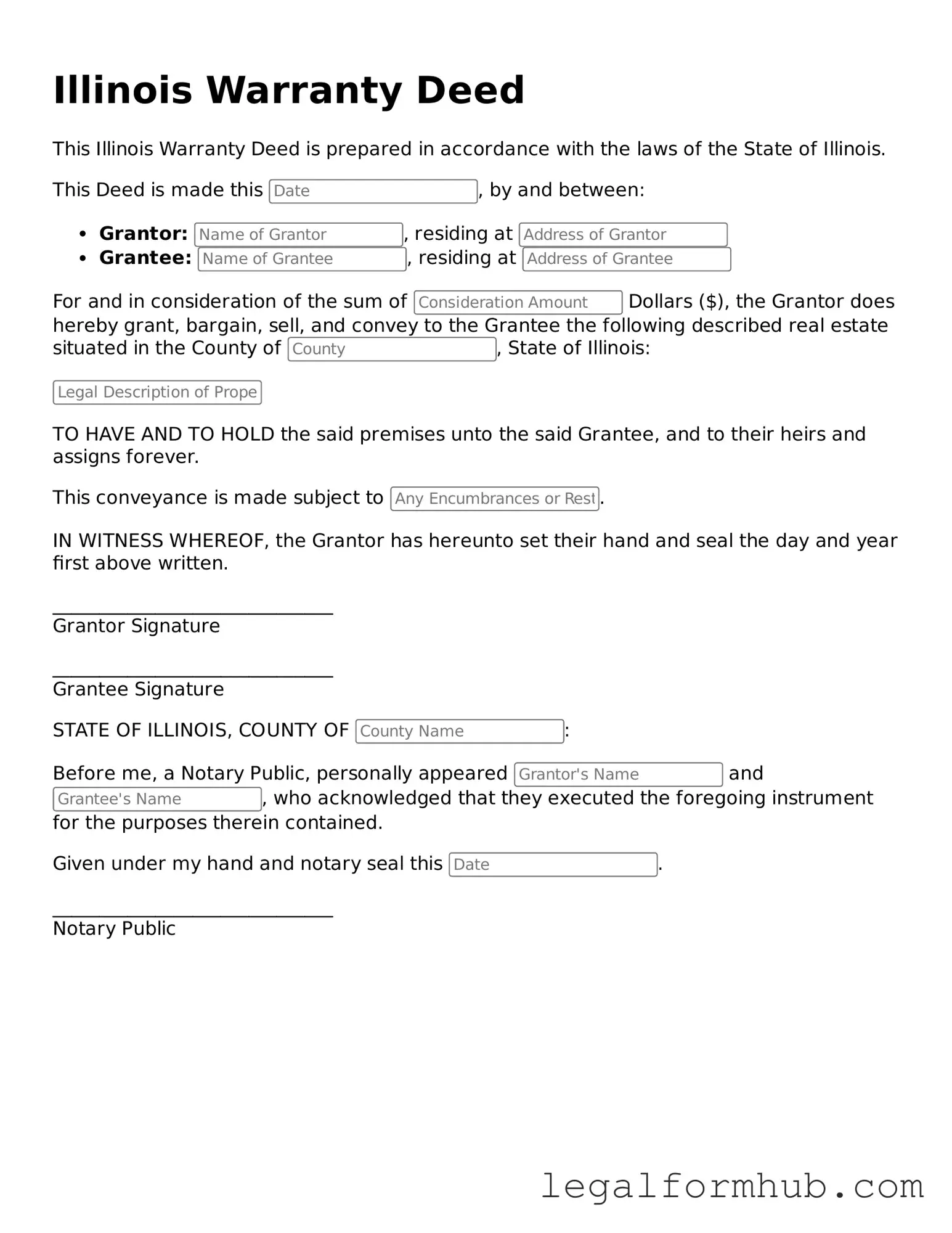The Illinois Deed form shares similarities with the Warranty Deed. Both documents serve the purpose of transferring ownership of real estate. A Warranty Deed guarantees that the seller holds clear title to the property and has the right to sell it. This document also provides assurances to the buyer against any future claims to the property, making it a secure option for real estate transactions.
Another document akin to the Illinois Deed form is the Quitclaim Deed. While both are used to transfer property, a Quitclaim Deed offers no guarantees about the title. This means that the seller relinquishes any interest they may have in the property, but does not assure the buyer of clear title. It is often used among family members or in situations where the seller may not have a clear title to the property.
The Special Warranty Deed is also comparable to the Illinois Deed form. This document provides a limited warranty to the buyer, covering only the time the seller owned the property. Unlike a Warranty Deed, which covers the entire history of the title, a Special Warranty Deed protects the buyer only from issues that arose during the seller's ownership. This makes it a more limited option for buyers seeking assurance about their property title.
A Bargain and Sale Deed is similar in that it transfers ownership of real estate. However, it typically does not provide any warranties regarding the title. This type of deed implies that the seller has the right to sell the property but does not guarantee that the title is clear. Buyers should exercise caution when using this type of deed, as it may expose them to potential claims against the property.
The Grant Deed is another document that resembles the Illinois Deed form. A Grant Deed conveys property from one party to another and includes certain guarantees. It assures the buyer that the property has not been sold to anyone else and that the seller has not encumbered the property with any undisclosed liens. This makes the Grant Deed a reliable option for buyers seeking some level of protection.
The Deed of Trust is also related to the Illinois Deed form, but it serves a different purpose. This document is used to secure a loan on real estate. It involves three parties: the borrower, the lender, and a trustee. The borrower conveys the property to the trustee, who holds it as security for the loan. If the borrower defaults, the trustee can sell the property to repay the lender, making this document crucial in real estate financing.
The Title Transfer Document is another similar document. This form is used to officially transfer ownership of a property from one party to another. While it may not carry the same legal weight as a deed, it serves as a record of the transfer. It is often used in conjunction with other documents to ensure that the transfer is properly documented and recognized.
The Affidavit of Title is also relevant when discussing property ownership. This document is a sworn statement by the seller, affirming that they hold clear title to the property and disclosing any potential issues. While it does not transfer ownership, it complements the Illinois Deed form by providing additional assurances to the buyer regarding the title.
To ensure a smooth incorporation process, it is important to understand the requirements for filing the necessary documents. For detailed guidance, refer to this essential resource on the key aspects of Articles of Incorporation.
The Bill of Sale is similar in that it serves to transfer ownership, but it is typically used for personal property rather than real estate. This document outlines the sale of items such as vehicles or equipment. While it does not involve the complexities of real estate transactions, it shares the fundamental purpose of transferring ownership from one party to another.
Finally, the Lease Agreement, while primarily used for rental situations, can also bear similarities to the Illinois Deed form. A lease grants a tenant the right to occupy a property for a specified period. While it does not transfer ownership, it establishes a legal relationship between the landlord and tenant, similar to how a deed establishes ownership rights between a seller and buyer.
